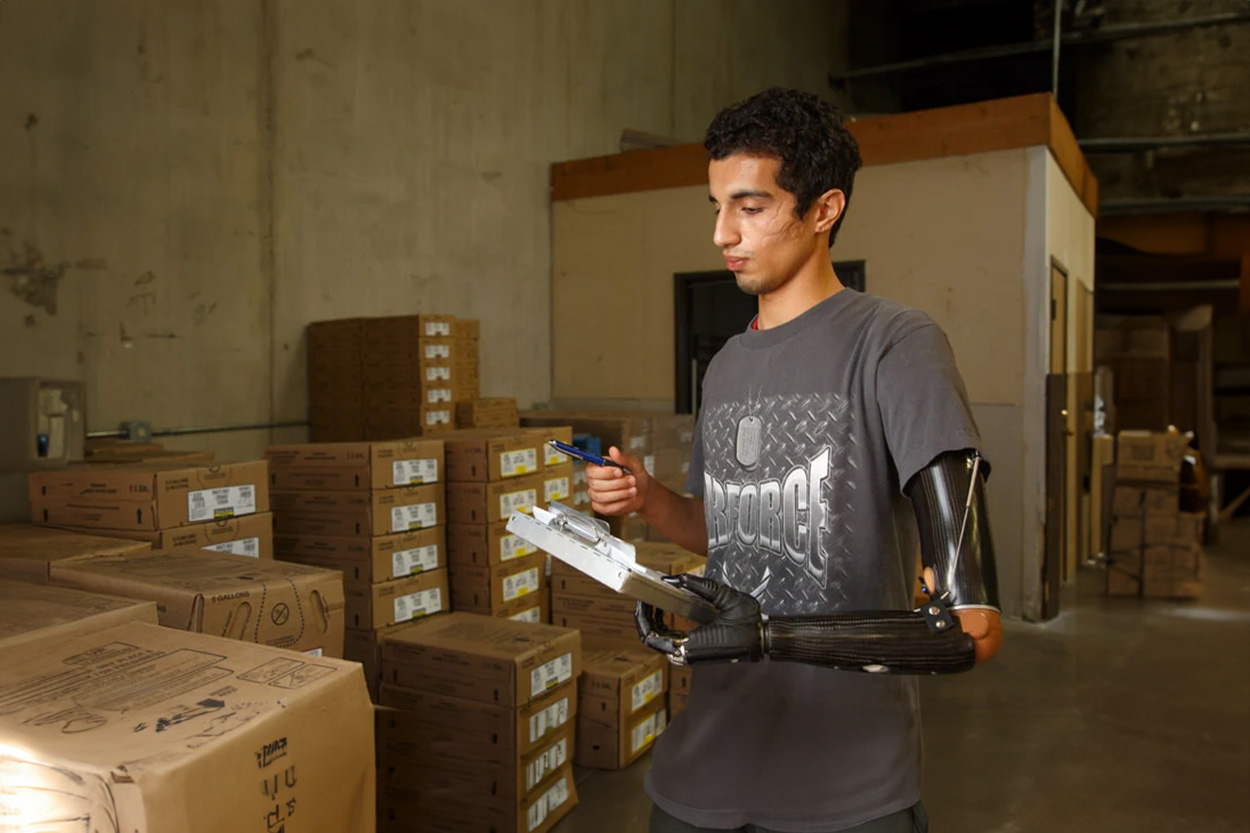Each year, thousands of babies are born with one of several “dactyly” conditions, including syndactyly, symbrachydactyly and ectrodactyly. In addition, there are other reasons children are born with finger differences and partial hands. Sometimes the differences are minor or can be corrected with surgery, and the parents don’t feel like the child needs a prosthesis. Other families might not see the need for a device until their child wants to do things like ride a bike or climb at the playground. Some parents want their child to be fit with a device as early as possible so that it can be incorporated into their daily routine. If you or someone you know is faced with deciding whether to fit a child with a prosthesis, we want you to know that there are prosthetic options available for all levels of finger and hand differences (for upper limb differences like below and above the child's elbow, please see our article, "Terminal Devices for Babies, Children and Adolescents").
Historically, there were not many options for prosthetic fingers beyond custom silicone restorations. Over the past 12 years, both partial and full finger options have become available. One example is the prosthesis worn by our patient, Soren, in the video below. Soren has symbrachydactyly, which you can read more about in our article, “Prosthetic Options for Symbrachydactyly.” Soren’s device features Point Design Digits that can be passively positioned to work with his thumb for grasping and pinching. The prosthetic socket has a BOA system that makes it easier for Soren to put on his fingers while the socket is loose, then turn the dial to get a secure fit on his hand. In the video below, an Arm Dynamics clinical therapy specialist helps Soren quickly figure out how to use his prosthesis for daily activities.
For children who are missing both the thumb and one or more fingers, a wrist-driven device is a good option for enabling the hand to grasp. The video below shows Veer wearing this type of device to extend and flex his wrist up and down or to open and close the grip between his prosthetic thumb and fingers. He can use his other hand to change the size and shape of his grip or press his prosthetic thumb and fingers against a counter or his thigh to reposition them as needed.
This wrist-driven device is called body-powered because by moving the wrist, the device is able to grasp and release objects. Because Veer’s prosthetic fingers and thumb are also passive, his device is called a hybrid device, which is a combination of two or more prosthetic categories.
You may be wondering, "When is the best time to fit a child with a prosthesis?" It depends on their level of limb difference, their age, and their hand size. For children with a partial hand limb difference, prosthetic fitting may be recommended when they are a little older. We still recommend consulting with our clinical team at an early age. We can educate parents on their child’s prosthetic options and help determine the most appropriate developmental phase for the child to begin using a prosthesis. Children are refitted over the course of their lifetime as they grow and their developmental needs change. Watch Brandon’s video below for an example of a child with syndactyly who was fit with a prosthesis in 2014 and again in 2016.
Fitting a child with a device can help them accomplish more and give them the confidence they need to move forward. We asked Veer what he thought about his device. His response? “I like it because it helps me pick up things and do more better.” An excellent answer.
Our prosthetists and technicians take the time to fit each child with a comfortable, functional prosthesis, and our clinical therapy specialists make sure that each patient knows how to use their device before they go home.
If a prosthesis could help you or your child, please contact us to set up a complimentary consultation, either in-person or via video chat. If you have any comments, please leave them below.





%20President%20and%20Senior%20Clinical%20Director.jpg?width=600&height=600&name=John%20M.%20Miguelez%2c%20CP%2c%20FAAOP(D)%20President%20and%20Senior%20Clinical%20Director.jpg)










Comments (2)